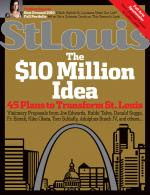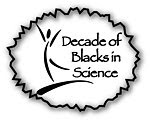On Wednesday, September 8, 2010, THE Dr. Mae Jemison spoke a room of science, technology, engineering, and mathematics (STEM) educators and advocates at the state of Missouri STEM Summit presented by the Department of Elementary & Secondary Education.
As I listened to her keynote talk: "Diversity in STEM: The New American Imperative", I fought hard, very hard, to control myself. I was not only super excited about seeing her in person, but was so moved by her words. She discussed shy science literacy matters for everyone, EVERYONE, and why bringing more women and under-represented minorities into STEM career tracks is critical to our nation's success. As she put it, training ALL of our students in STEM prepares them to take jobs in innovation; or alternatively for those that do not wish to become scientists or engineers, we want them to be ready to understand and use new technologies and make decisions about science and tech policy or personal matters is important.

I really felt like she was reading my mind and sharing those thoughts with the world, especially when she remarked, "What was best about my education in science is that it gave me the ability to think critically and be flexible." That's the heart of why science literacy matters. It prepares individuals to make the best decisions possible for themselves and their families.
She then got to the heart of the talk for this audience of formal and informal STEM educators and advocates -
How STEM is taught and learned. I sat down in front directly facing Dr. Jemison, meeting her eye every time she look up. And her words rang so true to me that the remainder of this post I'm using first person voice because everything she was saying, I have said, and I feel as passionately as she. And if you can imagine, I was bursting inside ready to stand up and testify; but vigorous head nodding was all I allowed myself to do in that professional setting.
Point #1 -
Kids love science. They have this innate curiosity to learn about the word, to tinker, to figure things out. The rote memorization of fact has bored the love of science and engineering out of most kids. "We have got to figure out how to use the prodigious construct for learning and keep them engaged in science past the exploratory/curiosity in science. Rote memorization is not the way to get to improved STEM access to all students. Hands-on inquiry-based learning is a fancy name for kids doing science." Science is a VERB, it's what I do. (That last sentence is me).
Point #2 -
STEM cuts across all fields. Reading,writing, arithmetic. Students learn all kinds of subject matter via science and science can be used to reinforce other subject matters. It is an applied way to utilize these skills. For examples, students read about experiments, take measurements, and summarize and present results.
Point #3.
Everyone should be on board to improve STEM access and literacy. Industry is very is important but we should run schools like businesses, but because industry gives us the feedback we need to help students prepare for these great careers in STEM.
Point #4 -
Just putting a kid in front a computer is NOT science literacy. "Giving a child a chance to grow a potato in a cup is better science education than all of that fancy technology equipment!!" Preach, preach it.
Point #5 - What’s best for all students to do well in science that they have to have
Exposure, Experiences, and Expectation – whether they become professional scientists/engineers or not. (
And by now I was ready to jump up and shout). A majority of career opportunities in science and engineering do NOT require a 4 year degree. As adults, we have got to do better job as guidance counselors or as parents or mentors. We've got to help them know what their options are and make sure they are adequately prepared for them.
Exposure: Students must exposed to what scientists and engineers do. This helps them know the variety of career possibilities available to them.
Experiences: One really needs some hands-on experiences to gain confidence in a subject. Try it out, then you'll know if you're good at it, want to do it, etc. And confidence aligns with better performance in a subject. Don't think so? But some studies have found that girls do as well or better than boys in math & science until the end of high school. By then they are given the message that aren't as good as boys in this subject and coincidentally, they begin to perform poorly. For some reason, girls are given messages that make them feel less confident in their abilities in science and engineering, even when they do very well in these subjects. Experience is the key to build confidence and better performance in STEM for all students.
Expectation: Expectation is predictive. Youth & Adults live up or down expectations. Pay attention to the words you say and the tone you set before all children, teens and adults. Think back to the example of girls and math.
At the end of her talk, I was the great science stalker that I am. I managed to get not only a picture with her (even as her handler was trying to shuttle her out), but I hugged her, too. I had to, I just had to. I was ready to tackle the handler. I was like, "Lady, do you not know how momentous this moment is for me right now? I'm seeing one of my role models - in the flesh, before my eyes. I'm ready to body-check for the chance to meet this woman!" But it was all good. Both Dr. Jemison and her handler were really sweet and accommodating and allowed some very quick group pictures before whisking her away to catch a flight out of Kansas City.
 |
| Dr. Jemison talking with a high school student from Kansas City. The young lady was sharing her interest in science. |
 |
| My picture with Dr. Jemison, along with the outreach staff at St. Louis Science Center |
Dr. Jemison is involved with science outreach and STEM diversity through two great programs: International Science Camp –
The Earth We Share and
Making Science Make Sense. Check them both out for more information.
































